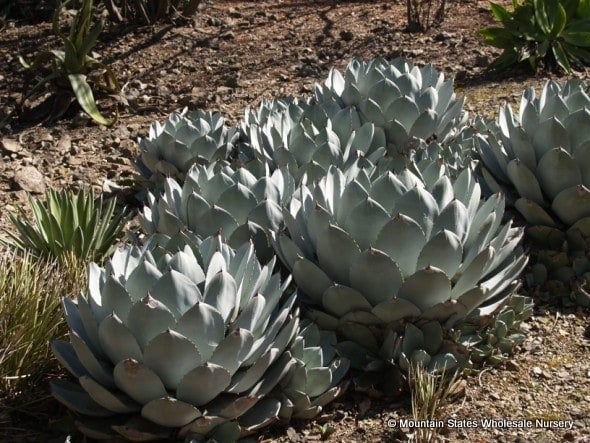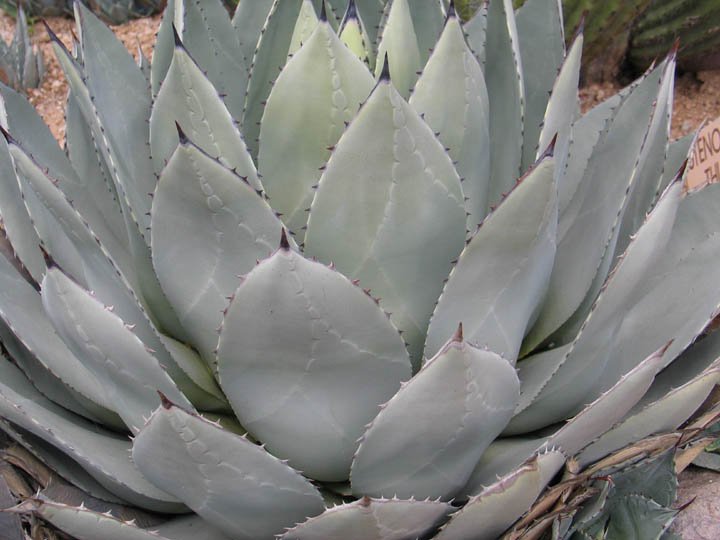Agave parryi
Parryi’s Agave
A variable species with several varieties, subspecies and selections. This species usually has rosettes that reach 2-3’ tall, slightly wider than tall, and freely suckering to form colonies. Agave parryi almost always has a black spinescent tip at the end of the leaves. Plants are monocarpic (bloom at the end of their life) with bright yellow flowers on very tall flowering stalks, reaching up to almost 20’ tall.
Plant in full to part sun, provide good drainage and low water when established. Hardy at least to 15°F, some varieties can tolerate even more cold.
These agaves are pollinated by many creatures, but bats seem to be very important to their pollination success.
Mescal, fiber, and food are made from the species wherever they occur, especially in Mexico.
The genus Agave is derived from Greek mythology being the daughter of Cadmus, who supposedly founded the city of Thebes; it generally translates to mean “noble’. The species, parryi, is named for Dr. Charles Christopher Parry (1823-1890), an English-born American botanist and collector.
Found on rocky slopes from 5,000-7,000 ft. in Arizona, New Mexico, Texas, south into Mexico as far south as San Luis Potosi.
Photo of Agave parryi var. huachucensis by Liz Makings, SEINET
Agave parryi var. huachucensis, photo by Charles Minckley, SEINET
Agave parryi subsp. neomexicana, photo by Curren Frasch, iNaturalist

Agave parryi var. truncata, photo by Mountain States Wholesale Nursery

Agave parryi subsp. parryi, the selection "Estrella", photo by Mountain States Wholesale Nursery
Agave parryi subsp. parryi, in the wild. Photo by Eric Hough, iNaturalist
Agave parryi var. cousii, photo by Mike H., iNaturalist
Agave parryi bloom stalk, photo by Max Licher, SEINET






